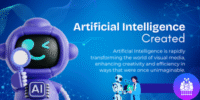What Is Meant Cloud Computing: A Beginner’s Guide to the Digital Sky
Published: April 15, 2025

What is Meant Cloud Computing, and what is Cloud computing is likely to be a buzzword derived from geek culture, but it’s not a part of my daily life. However, the reality is that if you’re reading this article in your email account on Gmail or streaming videos on Netflix or even saving documents to Google Drive, you are making use of cloud computing. Cloud computing means providing computing functions like servers, databases, storage software, analytics, etc., over the internet and via the network.
An example of this includes the leasing of physically owned hardware being outsourced and accessible through AWS, Microsoft Azure, and Google Cloud. Why Do You Even Have To Care? The process of solving problems without understanding the subject of cloud computing is a difficult and foreseeable problem. Cloud computing’s benefits outweigh its disadvantages in that it doesn’t need energy and is much cost-effective, faster, and more flexible and flexible than other computing options.
Aren’t there many of you who are a student or an owner of a business, or an aspiring developer? If yes, then whether you’re trying to get your feet wet in the digital realm or not, having a basic understanding of cloud computing will help you stay ahead of the pack.
What You Will Learn From This Article
This article will discuss the concept of cloud computing and its various types of advantages, benefits, physical examples and the way it operates. We’ll break down these complex concepts and describe them in humorous simple terms, taking you from IaaS to traditional, traditional and. cloud-based models and attempting to incorporate AI into the equation. Additionally, we will give you some advice on how to select the right tools and create an intelligent cloud strategy. Are you ready to take off into the clouds? Let’s start!
Table of Contents
- Introduction
- What Is Meant Cloud Computing?
- Types of Meant Cloud Computing
- Benefits and Advantages of Cloud Computing
- Real-World Use Cases of Cloud Computing
- How Cloud Computing Works
- Models of Cloud Computing IaaS, PaaS, SaaS, FaaS
- Cloud Deployment Types Public, Private, Hybrid, Multi-cloud
- Cloud vs Traditional Client-Server Models
- Artificial Intelligence and Cloud Computing
- Why Businesses Are Moving to the Cloud
- Choosing the Right Tools and Strategy
- Final Thoughts
1-What Is Meant Cloud Computing Meant?
What is meant cloud computing allows the provision of computing services via the Internet that provide on-demand services such as storage, mobile servers networks, databases software, analytics, as well as AI.
You don’t have to store anything physically such as software or servers, on your personal computer. Everything can be accessed via Cloud at any moment from any place.
What is meant cloud computing? It’s similar to renting an apartment as opposed to purchasing a whole building. This way you are able to have greater flexibility, scalability and savings.
2-Types of Meant Cloud Computing

What is Meant cloud computing is classified according to the service provided and the way it is used. These are the four categories:
Service-Based Models
- IaaS–Infrastructure as a Service
- In the event of implementing this model companies can lease cloud-based services like servers, virtual machines and storage, only paying for the services they use.
For example:, Amazon EC2 or Microsoft Azure VM
- PaaS–Platform as a Service
- The PaaS model allows an organization to create, test and then deploy applications without the overheads that comes with managing infrastructure.
For example:, the Google App Engine
- SaaS–Software as a Service
- So, these programs are available on the internet without installing.
For example: Dropbox, Google Workspace, Salesforce
- FaaS–Function as a Service
- A type of serverless computing, where you are able to execute small code in response to events.
For Example: AWS Lambda
3-Benefits and Advantages of Cloud Computing

What is Meant cloud computing is definitely an extremely hot subject. Here are some of the factors that make cloud computing an exciting technology:
- ✅ cost-effective; The only cost you pay is for the service you’re making use of.
- 🚀 Scalable. You may alter your scale at any point in a flash.
- 🌍 Global Accessibility: The ability to work anywhere in the world as long as you have internet access.
- 🔒 Secure: Automatic encryption, conformity and backups make this easy.
- ⏱ Speed: Get your applications and services up and running in just a matter of minutes.
- 🧩 Flexible integration: seamless integration with third-party platforms and tools.
4-Real-World Use Cases of Cloud Computing
What is meant cloud computing isn’t a fanciful concept. It’s an actuality that’s causing innovation across the globe. Here are some solid applications:
- 🎬 streaming service Netflix utilizes AWS for multinational show integration.
- 🛒 E-commerce: hundreds of thousands of merchants are hosted by Shopify’s scalable and infinitely expandable cloud.
- 🧠 AI and Machine Learning: OpenAI provides its language models with cloud-hosted resources.
- 🏥 Health: Patient information is now stored in a secure manner and analyzed by a variety of hospitals that use cloud technology.
- 🎓 Education: Complete platforms like Coursera are powered by cloud infrastructure.
5-How Cloud Computing Works
What is meant cloud computing? How do you work it? Cloud services are accessible via the Internet. Cloud services are managed by the cloud services providers via data centers. They connect via API or browser. The cost is usually per month or based on the amount you use.
What is meant cloud computing? As an example, perhaps you wish to save an entire library of images. Instead of storing them on your computer or smartphone then you upload the images onto Google Photos. This is cloud storage at work.
6-Models of Cloud Computing: IaaS, PaaS, SaaS, and FaaS
What is meant cloud computing can be divided into several models based on the type of service provided. We will discuss that in the future. For instance, IaaS would be ideal for users of the system administrator since it allows for power control of the service.
- PaaS can be beneficial for developers who are interested in writing code instead of managing servers.
- SaaS is best suited to customers who are using the service.
- FaaS removes the need for infrastructure and is able to be used to run processes.
A tip for those who are new to using and utilizing SaaS is fairly simple.
7-Cloud Deployment Types Public, Private, Hybrid, Multi-cloud
What is meant cloud computing Each type of deployment corresponds to an individual user’s needs This means that a wide range of cloud deployments are accessible.
- Shared Cloud Services: These services can be shared by several users (AWS, Azure.)
- Private Cloud: The creation and administration of the infrastructure is devoted to a single organization, resulting in more control and more expensive.
- Hybrid Cloud: The best combination of the two. Hybrid Cloud combines both private and public.
- Multi-cloud: Provided through a variety of service providers in order to stop locking in vendors.
8-Cloud vs. Traditional Client-Server Models
What is meant cloud computing Traditional computing, without cloud technology, was a process that involved companies using servers that were on-premises in a server-client model. This meant ongoing hardware installations as well as ongoing software maintenance and regular system updates.
Here’s what cloud computing can do to you:
- No software installation.
- Always up-to-date.
- There is nothing that can be done to limit the access of servers to be managed.
- A lesser number of IT staff to manage.
It’s as if you’re throwing away flip phones for the iPhone. Everything is more efficient.
9-Artificial Intelligence and Cloud Computing
What is meant cloud computing Artificial Intelligence as well as Cloud Computing AI, coupled with cloud computing is one many of the most fascinating technologies to be watching. What’s the motivation behind this?
- AI models require lots of processing because they require a lot of resources.
- Cloud services that provide on-demand resources can increase their utility.
- It is possible to train, verify models, and then release them efficiently and swiftly.
- The majority of AI instruments, such as ChatGPT, are cloud services.
From facial recognition, chatbots and voice assistants cloud AI handles everything.
10-Why Businesses Are Moving to the Cloud
Here’s what’s driving this shift:
- Profits that are higher = lower expenses.
- Improved customer experience = faster development.
- Rapider reaction to market shifts means greater flexibility.
- Improved team collaboration = increased productivity.
In 2015, your business will most likely be behind cloud-first businesses.
11-Choosing the Right Tools and Strategy

🛠 5 Practical Suggestions
- Step by step: For starters, make use of SaaS applications such as Google Workspace or Dropbox.
- Examine the level you are at: Do you require storage or computing AI tools?
- Don’t spend too much: The cloud can be expensive if you don’t have a proper plan of management.
- Select a provider: AWS, Azure, or Google Cloud each of which have benefits.
- Find a professional’s guidance: Their knowledge of the tools is essential to successful implementation.
🎯 Pro Tip: Start by using the hybrid cloud. It’s more flexible and doesn’t force a complete switch.
Conclusion
What is meant cloud computing? It is the core of digital existence in the present. If you’re a casual or business owner, cloud computing is the engine that powers the day-to-day applications such as services, applications, and the technological innovations you are able to count on.
Like all things, the cloud continues to change and evolve. There’s no doubt that we’ve already moved from IaaS into FaaS as well as from Netflix towards AI tools such as ChatGpt. What is Meant cloud computing There are numerous benefits for embracing the cloud, such as improved performance, new tools, and opportunities. In the end, it all comes to strategy: if you’ve got the right plans and strategies, the cloud can lead you to the top of the heap.

- Be Respectful
- Stay Relevant
- Stay Positive
- True Feedback
- Encourage Discussion
- Avoid Spamming
- No Fake News
- Don't Copy-Paste
- No Personal Attacks



- Be Respectful
- Stay Relevant
- Stay Positive
- True Feedback
- Encourage Discussion
- Avoid Spamming
- No Fake News
- Don't Copy-Paste
- No Personal Attacks





